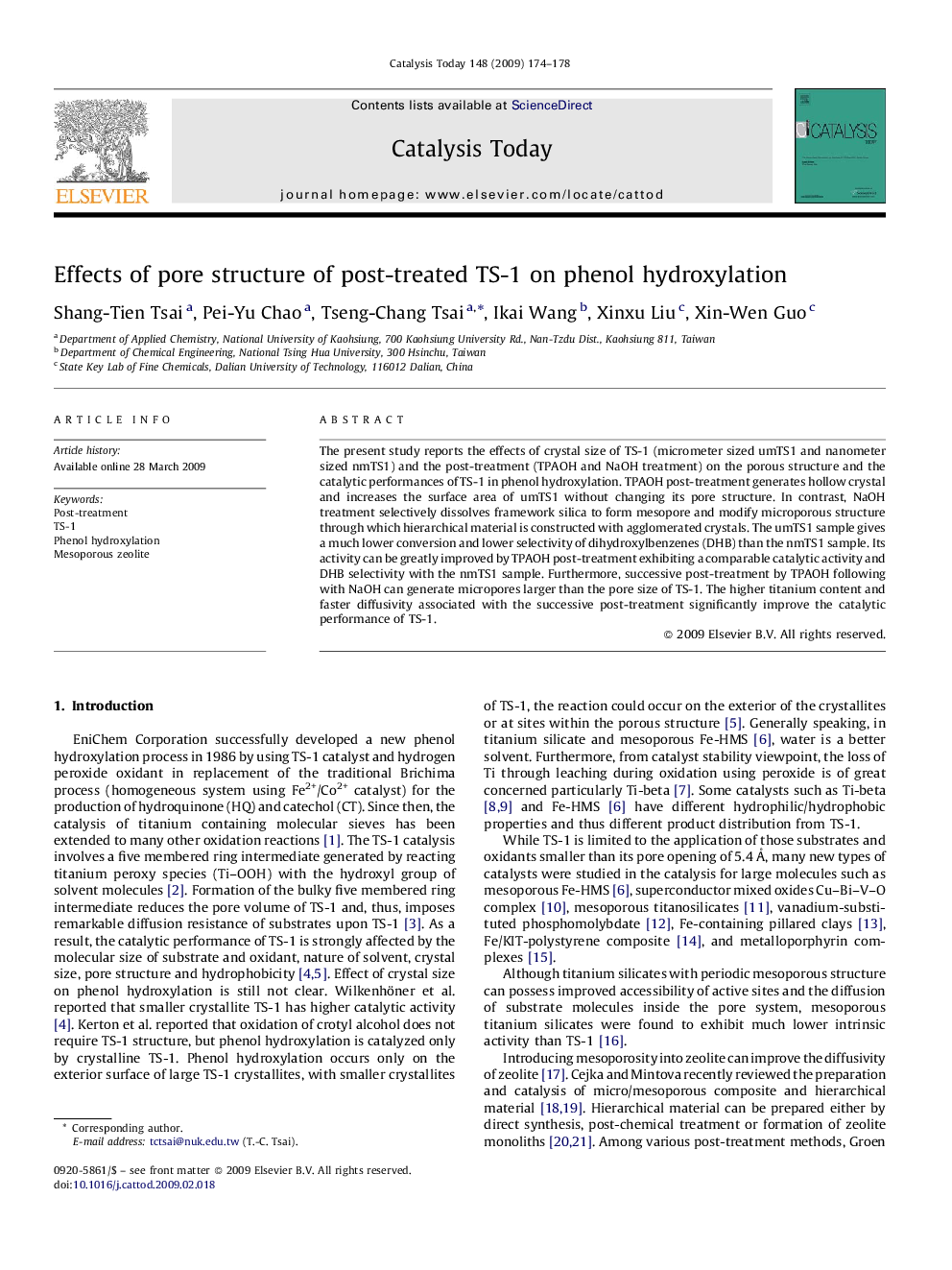| Article ID | Journal | Published Year | Pages | File Type |
|---|---|---|---|---|
| 57056 | Catalysis Today | 2009 | 5 Pages |
The present study reports the effects of crystal size of TS-1 (micrometer sized umTS1 and nanometer sized nmTS1) and the post-treatment (TPAOH and NaOH treatment) on the porous structure and the catalytic performances of TS-1 in phenol hydroxylation. TPAOH post-treatment generates hollow crystal and increases the surface area of umTS1 without changing its pore structure. In contrast, NaOH treatment selectively dissolves framework silica to form mesopore and modify microporous structure through which hierarchical material is constructed with agglomerated crystals. The umTS1 sample gives a much lower conversion and lower selectivity of dihydroxylbenzenes (DHB) than the nmTS1 sample. Its activity can be greatly improved by TPAOH post-treatment exhibiting a comparable catalytic activity and DHB selectivity with the nmTS1 sample. Furthermore, successive post-treatment by TPAOH following with NaOH can generate micropores larger than the pore size of TS-1. The higher titanium content and faster diffusivity associated with the successive post-treatment significantly improve the catalytic performance of TS-1.
